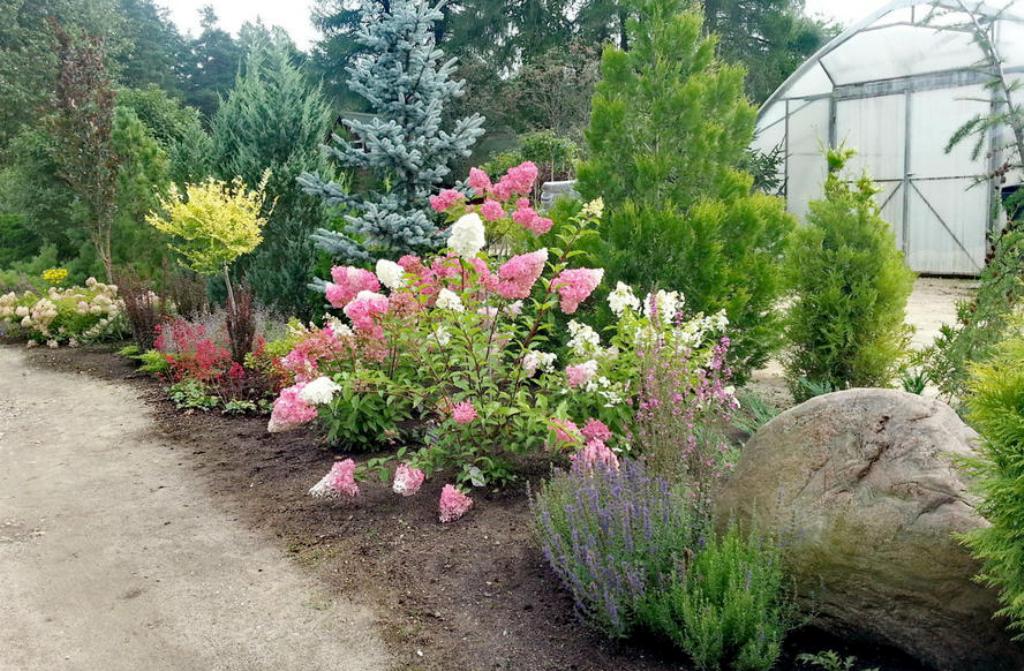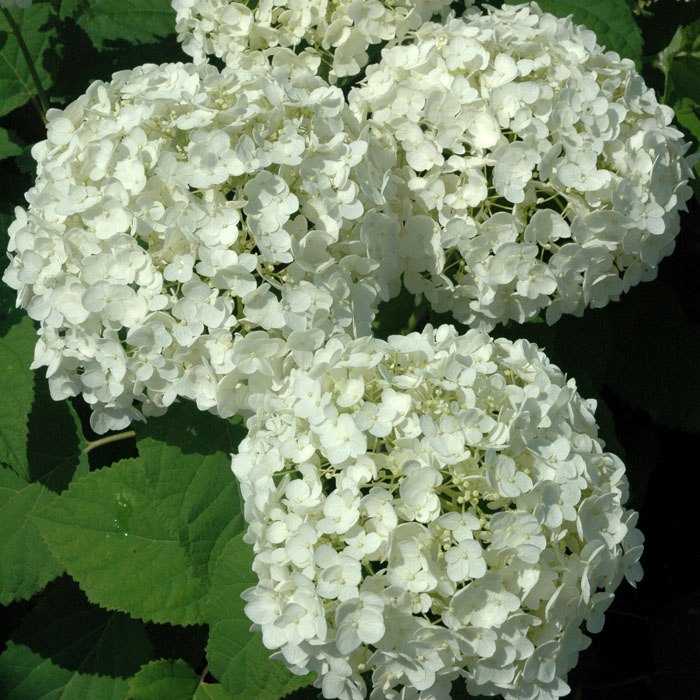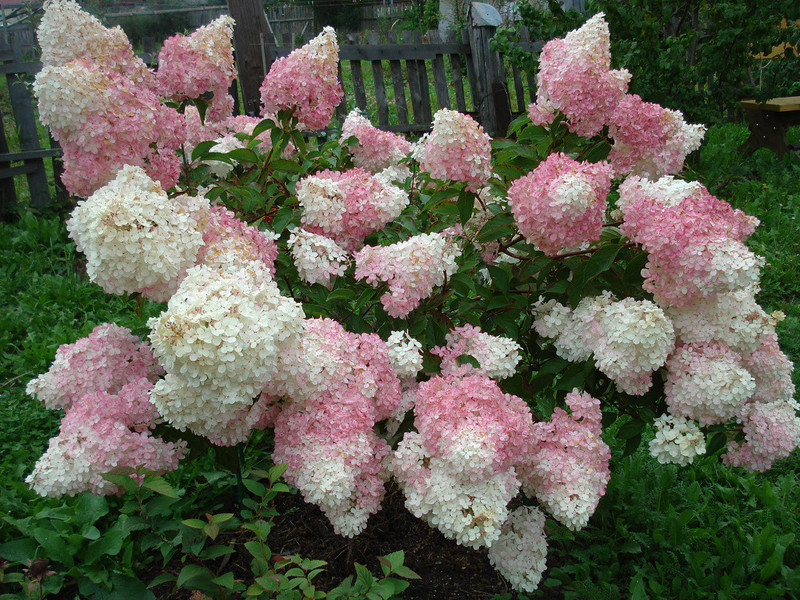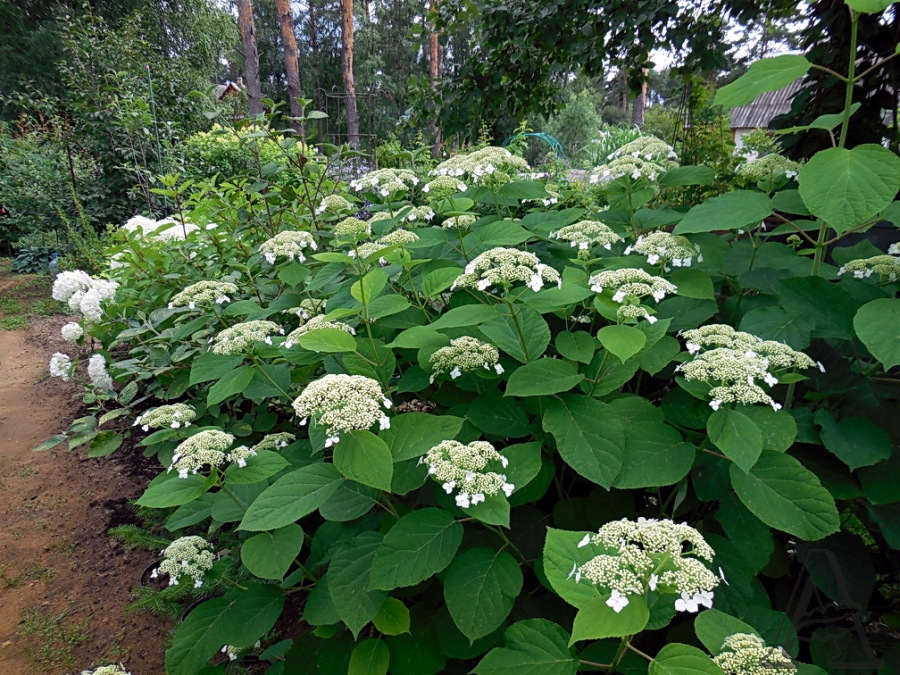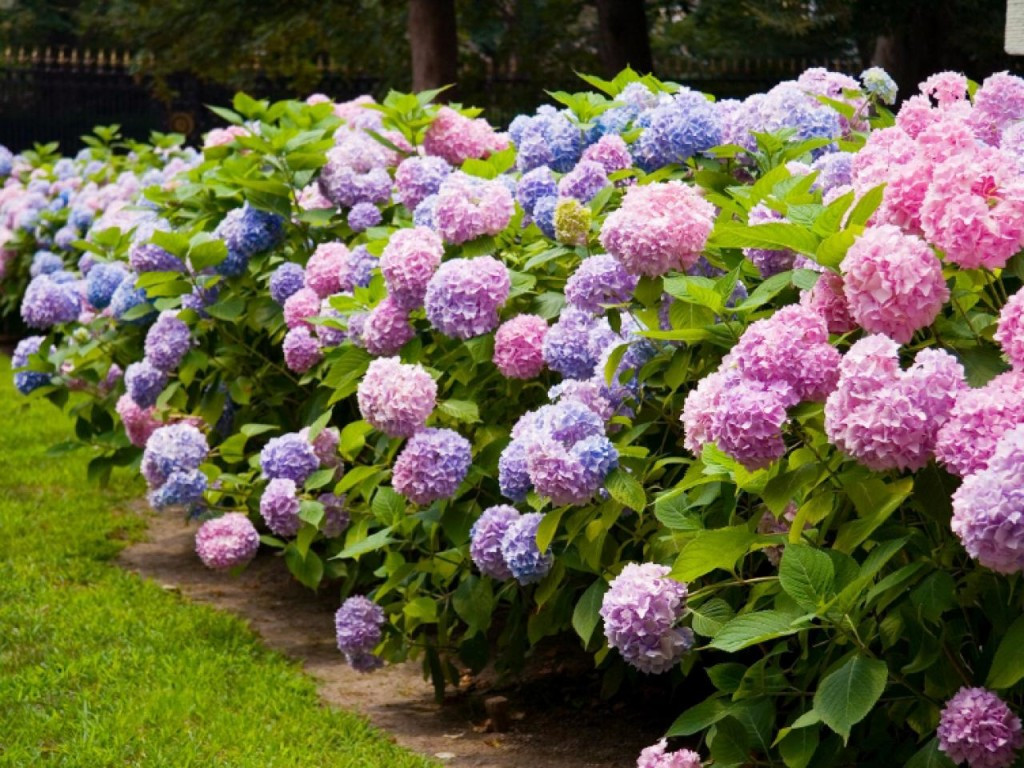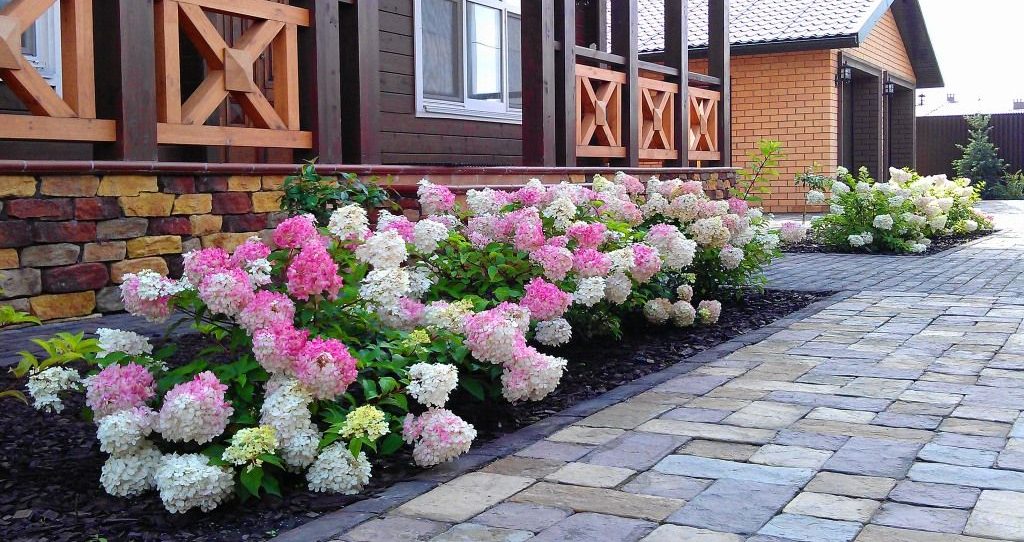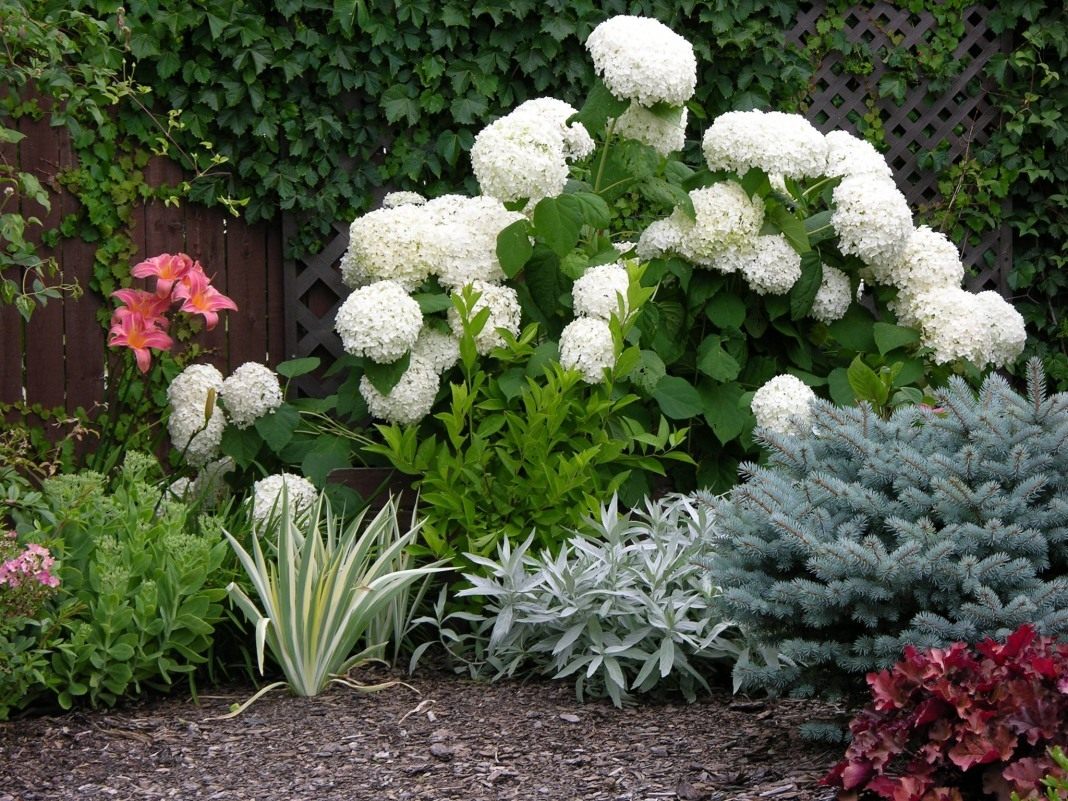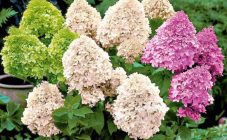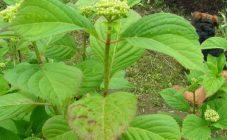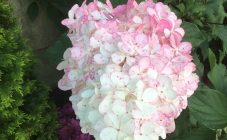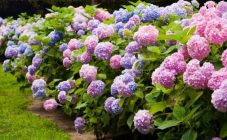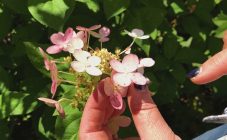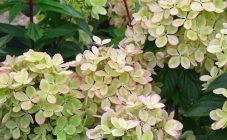Content:
With good growing conditions and proper care, hydrangea (hydrangea) can bloom all summer. There are more than 70 species of this plant, and a huge number of varieties cannot even be listed. The bush is immortalized in a beautiful legend: a girl who fell in love with a brave warrior disappeared into thin air, leaving her beloved in memory of a flowering bush with pink inflorescences. Since then, people have been growing hydrangeas in different parts of the world.
A brief history of the emergence of culture
Excavations in different parts of the world confirm that hydrangea appeared on the earth millions of years ago. Initially, it grew in the region of North America, and later migrated to Asia. Hydrangea (Hydrangea) got its Latin name because of the structure of the seed capsule, which looks like a vessel for water.
The plant appeared in the gardens of Europe only in the 18th century; D. Bartram, who was keen on botany, brought it here from North America. It was a treelike hydrangea species. Soon another botanist, K. Peter Thunberg, was sent to the Japanese islands for seeds of large-leaved hydrangea, which he managed to get with great difficulty. So new plant species began to spread in Europe.
Half a century later, the German scientist F. von Siebold procured and brought several varieties of this culture unknown to European botanists, including the panicle hydrangea.
Popular varieties for garden decoration
To decorate gardens and parks in Russia, landscape designers use 2 types of hydrangea in projects: panicle, tree and large-leaved. The first 2 species have gained popularity due to their unpretentiousness and frost resistance. In the Middle Lane, for their planting, it is better to choose the most sunlit places. In the southern regions, it is recommended to organize a little shading for the hydrangea. Below is a list of the 10 most famous plant varieties in Russia.
Annabelle
Anabel The variety belongs to the tree hydrangea. The plant is a shrub that grows up to 1.5 m tall, with a spherical crown 3 m in diameter.Large inflorescences are spherical in shape, their diameter is from 15 to 25 cm.At the initial stage of development, the flowers have a greenish color, in the process of flowering they become snow-white. Young seedlings require shelter for the winter. Adult plants show good frost resistance, are unpretentious, and are not susceptible to disease. Lives up to 50 years.
Vanilla Fraise
A popular representative of the panicle hydrangea. Shrub about 2 m high with a spreading crown. At the beginning of flowering, the petals are snow-white, in the sun they turn pink, gradually acquiring a raspberry hue by autumn. The inflorescences have a pyramidal shape and a length of up to 35 cm, resembling in appearance ice cream with strawberry syrup.Blooms in the first year of planting. Excellent frost resistance. Young specimens require mulching for the winter.
Limelight
Two-meter compact bush that does not require a garter. Flowers in broad-pyramidal inflorescences 30 cm long bloom by August and remain on the plant until frost. The petals gradually change their color from lime to yellow and then snow-white. In autumn, the flowers turn pinkish, and the leaves turn purple. The variety requires fertile soil, has good disease resistance and excellent frost resistance, which increases with age.
Peppermint
Repaired variety belonging to the large-leaved hydrangea species. The flowers have bicolor petals with a pink, blue or purple center and white edging. The brush is folded into a sphere with a diameter of up to 25 cm. The height of the bush is 0.7-0.9 m. The crown is spherical in shape, compact. The variety requires good lighting. Can be grown in a container.
Pinky Winky
Panicle hydrangea of the Belgian selection. The height of the bush varies from 1.5 to 2.5 m. The crown is wide, spreading. Inflorescences are cone-shaped, snow-white in color, up to 25 cm long. The formation of brushes continues until autumn. Their base turns purple, and new white flowers bloom at the tops. Requires a garter to support because of the extra large hands. Before wintering, the inflorescences are cut off so that the shoots do not break off. High winter hardiness.
Polar Bear
One of the best varieties of panicle hydrangea. The height of the bush is 1.5-2 m, it looks compact. Inflorescences are broadly pyramidal, very large, up to 30-40 cm. Shoots are strong, resistant to drooping. In the initial stage of flowering, the petals have a lime color, then they successively change it to white and cream. By the end of summer, the flowers turn pink. Easy to grow in any climate. The plant is not prone to disease, it recovers quickly. In winter, hydrangea does not require shelter, but it does need mulching.
Sterilis (Sterilis)
A popular variety of tree hydrangea. The bush grows to an average of 1.5 m. The crown is loose, spherical. Drooping shoots. Inflorescences are corymbose, convex, white. The plant winters well in the Central lane, in the northern regions it requires shelter. Differs in rapid growth. For more lush flowering, it needs pruning.
White Dome
The variety is a well-known representative of the tree hydrangea. The height of the bush is up to 1.5 m. The leaves are large. Inflorescences are a domed shield with a diameter of up to 25 cm, they look openwork. The color of the petals is creamy with a white border. The branches are upright, do not require support. The crown diameter is up to 3 m. The plant gives a good annual growth and has a high winter hardiness. Only young specimens of hydrangea can freeze.
Phantom
A spreading and powerful bush of two meters in height and the same width with vertical shoots. Conical inflorescences, up to 30 cm long, consist of large creamy flowers. By the beginning of autumn, the petals turn pink. The variety is not picky about the composition of the soil, it has good disease resistance. Can be grown as a standard tree. Winter hardiness is excellent. When freezing, the plant quickly recovers and blooms magnificently. It is better to plant it in sunny places. Hydrangea Phantom is a true long-liver.
Endless Summe (Endless Summer)
A well-known variety of large-leaved hydrangea. Refers to the remontant group. The height of the bush according to the description is up to 1.5 m. Inflorescences are spherical 10-15 cm in diameter. The color of the petals depends on the acidity of the soil. The flowers can be blue or pink. The plant has a pleasant aroma and is often used for cutting. For the winter in the Middle Lane requires light shelter.
Planting and growing
Most hydrangea varieties need good lighting for flowering.It is better to choose a place where the plant can receive sun in the morning or evening hours. The midday heat can cause leaf burns. Any building or tall neighbors can become protection from the scorching sun. If hydrangea is used in the landscape, with which it is combined according to growing conditions, it should also be considered.
The soil for these plants should be loose, but at the same time hold water well, sandy loam soil will not work for them. For high-quality flowering, the indicator of soil fertility is important, therefore, the cultivation of hydrangea requires fertilization. Top dressing begins to be introduced simultaneously with the beginning of the growing season, alternating organic and mineral.
All nutrients are supplied to the plant in liquid form. Superphosphate, potassium sulfate are used as top dressing. Nitrogen fertilizers need to be applied only in early spring, later they can enhance the growth of green mass to the detriment of flowering. It is important to give the hydrangea nutrients at the time of bud formation.
Most varieties of hydrangea require pruning, which can be done in spring or autumn, as the plant blooms on the shoots of this and last year. For panicle and tree hydrangeas, pruning in spring is more suitable, since their inflorescences are formed at the tops of new shoots. But the large-leaved hydrangea is cut in the fall, in the spring only frozen and dried shoots are removed.
Creating compositions with hydrangeas
If you have a summer cottage or a country house, you need to approach the landscaping of the territory competently. Hydrangeas in the design of a summer cottage often become the center of a flower arrangement:
- Vanilla Fries is used in mixborders. The variety looks great near phlox, framed by a cuff and stonecrops.
- Limelight serves in the landscape to form hedges, high curbs, becomes the center of the mixborder.
- White House is often planted as a tapeworm, the plant is also effectively combined with dwarf leaves, shrubs.
- The Endless Samme variety, planted near the garden pavilion, will create a cozy and romantic atmosphere for relaxation.
- Hydrangeas look spectacular against the background of coniferous hedges. As for coniferous crops, blue spruces, boxwood, juniper, cotoneaster are combined with it.
When deciding for yourself what to plant next to a hydrangea, you need to focus on the general style of the garden. Panicled hydrangeas in landscape design will look appropriate on a site that is decorated in Russian style. Hydrangeas planted on the banks of a natural or artificially constructed reservoir look very picturesque. Such a landscape looks like it came out from under the artist's brush.
To create a hedge from hydrangea, you can combine several varieties at once, modeling the shape of the shrub using pruning. A single bush of this plant looks luxurious and at the same time laconic against the background of a well-groomed lawn. In a group planting, hydrangea looks great along with spirea and other flowering shrubs.
A flower bed with hydrangea would be appropriate for an English-style garden. In this case, plant specimens should be planted at the same distance from each other and have the same color scheme. A French-style garden involves planting a hydrangea in the entrance area, where it will welcome guests with its ceremonial appearance.
Drawing up flower beds
Hydrangeas go well with many things in the garden. For flower beds, low-growing varieties of hydrangea with narrow foliage and inflorescences of different shades are best suited. The plan for a flower garden on a personal plot should be planned in advance. What can be planted next to a hydrangea? If the design of the garden is in the English style, you can plant it on a flower bed with geraniums and various ornamental grasses.On a site designed in a rustic style, when creating a flower bed, watering cans, buckets, cans, in which you can plant a hydrangea, will be appropriate.
You can also arrange for planting in a wooden box. Wooden benches and a table, a well, a gazebo will harmoniously fit into such a design. Ferns perfectly complement the hydrangea in the flower bed. Stylistically, they are equal partners and can create amazing ensembles, colors and textures, producing an equally noble impression.
If we consider flowering crops, plants of light shades are most suitable for hydrangeas: astilbe, anemones, unpredictable physostegia, paniculate phlox. The inflorescences do not have to be white, you can use a contrasting, bright color, achieving the perfect combination. Daylilies, primrose irises and daffodils can all serve as graceful frames for a luxurious hydrangea bush.
When choosing plants for a garden in which hydrangea plays a leading role, you should maintain the overall concept of the landscape being created. It is imperative to take into account the timing of flowering so that the site looks great throughout the season. Today hydrangeas remain fashionable, in demand and irreplaceable, and the variety of varieties allows you to find "your" plant, with which you will definitely be able to make friends.
